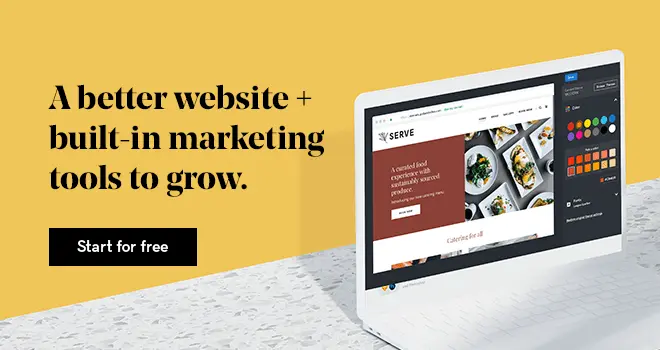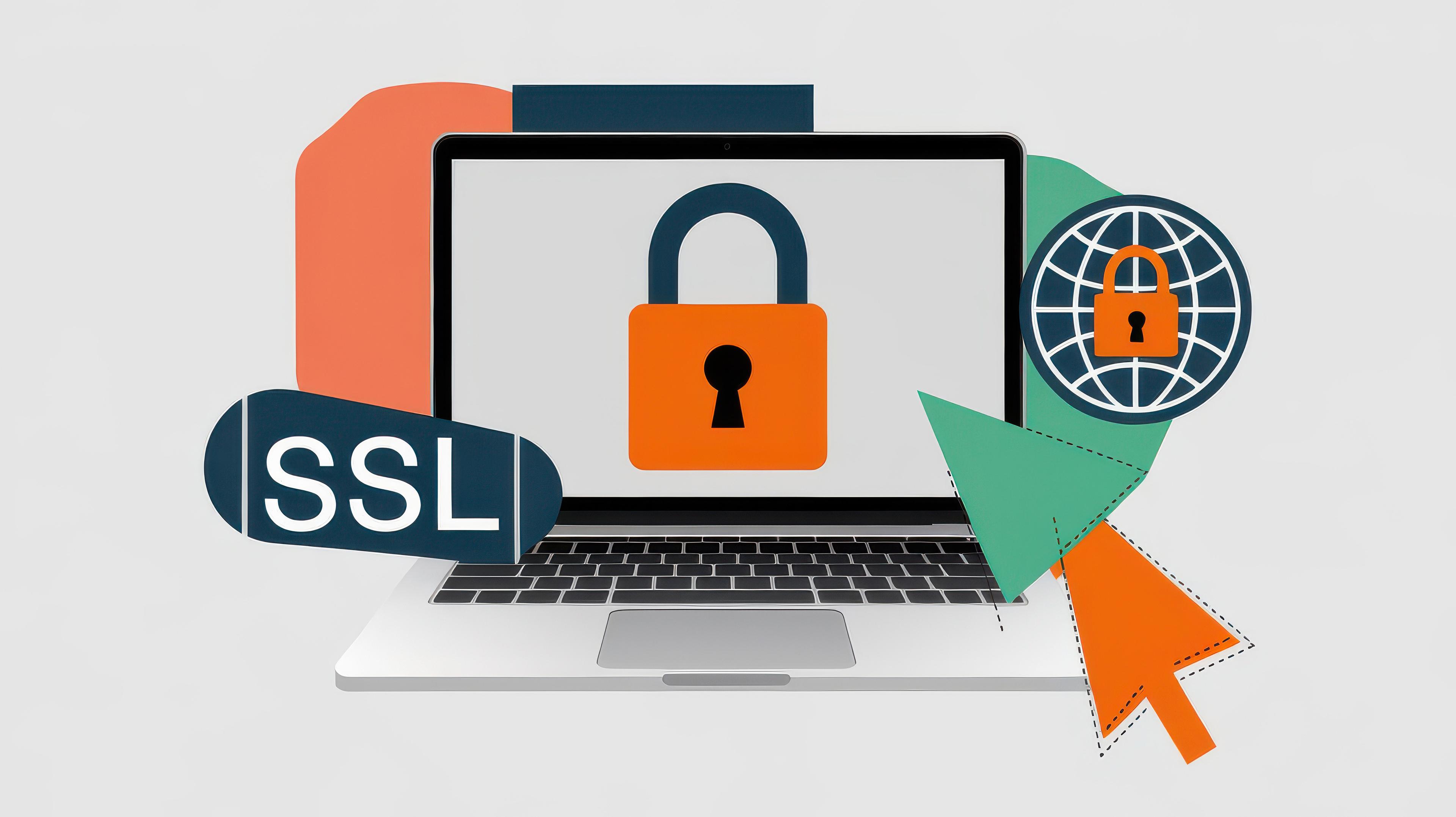Starting an online business in Saudi Arabia or Egypt can feel overwhelming, especially when you think you need a fully developed website to begin. The costs of building, maintaining, and updating a website can be both time-consuming and expensive. Resources could be better spent creating and selling your digital products in these thriving markets.
But what if you could skip the website altogether and start making sales right away? Whether you're an artist, educator, writer, or software developer, you don’t need a complex eCommerce setup to reach your audience. In Saudi Arabia and Egypt, where digital commerce is growing rapidly, you can sell digital products easily and start generating income with minimal overhead.
This guide will walk you through how to bypass the traditional website model and start selling digital products directly on platforms that cater to audiences in Saudi Arabia, Egypt, and the broader MENA region.
What are the best digital products to sell in the Middle East?
Choosing the right digital product is key to success. Digital products are versatile and can be tailored to various niches. Here are some of the best options that have proven successful:
1. Online courses & educational content
If you have expertise in a particular field, creating an online course is one of the best digital products you can sell. Platforms like Udemy, Teachable, and Skillshare allow you to upload courses that teach anything from cooking to coding. Online courses can generate passive income as students purchase them and learn at their own pace.
2. E-books & guides
Ebooks remain one of the most popular and low-cost digital products. Whether it’s a self-help guide, a how-to manual, or a novel, ebooks are easy to create and distribute. You can sell them on platforms like Amazon Kindle, Gumroad, or your chosen marketplace.
3. Digital templates & printables
Digital templates and printablea are in high demand, particularly within design, business, and personal finance. If you have skills in graphic design, consider creating templates for resumes, social media posts, planners and more.
4. Stock photos, videos, & design assets
If you are a photographer, videographer, or graphic designer, selling stock photos, videos, or design assets is an excellent way to monetize your work. High-quality images are sold for commercial use, often purchased by businesses, marketers, and content creators to enhance websites, advertisements, and publications. Platforms like Shutterstock and Adobe Stock let you upload and sell high-quality digital assets to a large audience.
5. Software, plugins, & mobile apps
Selling software, plugins, or mobile apps can be highly profitable, but it requires more technical expertise. If you have coding skills, you can create your own software solution or mobile app and sell it on platforms like Google Play, the Apple App Store, or via your social media pages.
6. Audio files: music, beats, & sound effects
If you are a musician or sound engineer, selling music tracks, beats, and sound effects can be a great digital product. Producers sell their work on platforms like Bandcamp, SoundCloud, or BeatStars, where artists and creators purchase these for various projects.
7. Memberships & exclusive content
Subscription-based models, like memberships or exclusive content, are ideal for creators who have a loyal audience. You can offer exclusive access to articles, videos, podcast and webinars in exchange for a subscription fee. Platforms like Patreon and Ko-fi allow creators to monetize their content through memberships.
8. NFTs & digital art
Non-fungible tokens (NFTs) and digital art are relatively new but have gained significant popularity. If you are an artist, consider selling your artwork as NFTs. You can list them on platforms like OpenSea or Rarible, where buyers purchase unique digital art pieces.
How do you choose the best digital product for you?
Before you jump into selling digital products, it’s important to choose the right one. Selecting the right product not only helps you stand out but also ensures your success in the market. Here are steps to guide you in choosing the best digital product for you.
1. Identify your skills & expertise
Start by looking at your skills and knowledge. What are you passionate about? What can you teach or share with others? Consider your hobbies, past work experiences, and what others often ask for your help with. Some examples include creating online courses, writing eBooks, designing digital art, or producing templates. A product that aligns with your skills will be easier to create and promote, allowing you to engage with customers more authentically.
2. Research market demand
Next, it’s crucial to evaluate whether there’s demand for your product. A great way to check market demand is by looking at similar products already available online. You can browse platforms like Gumroad, Etsy, or even social media to see if your product type has an audience. Tools like Google Trends or forums like Reddit can also give you insights into current trends. If your product idea has a strong market demand, it’s a good indicator of success.
3. Evaluate profit potential
When evaluating your product’s potential, think about the pricing and the volume of sales you need to make a profit. Digital products usually have low overhead costs, making them highly profitable once you break even on the creation process. Think about whether you can price your product competitively while maintaining profitability. Consider the value your product offers and how it compares to similar products on the market.
4. Consider the competition
It’s important to assess the competition in your niche. If there are many similar products, you’ll need a unique angle or selling point to stand out. This could be your style, how your product solves a problem, or the additional value you offer. Be prepared to market your product effectively to overcome competition. Look at what others in the market are doing right and see how you can improve upon it.
5. Choose the right sales platform
Choosing the right platform to sell your digital products is a big decision. There are plenty of online marketplaces and platforms to consider, which allow you to sell without needing a website. Some of these platforms are free to use, while others take a percentage of your sales. Think about where your target audience spends time and what platform aligns best with your goals.
6. Test your idea before fully committing
Testing your product idea before going all in is an important step. You can launch a small-scale version of your product or conduct surveys to gauge interest. Platforms like Kickstarter or social media ads can be used to test your concept. By gathering feedback early on, you can make adjustments to your product before investing too much time and money into it.
7. Focus on scalability & automation
Once your product is ready, think about ways to scale your sales. Digital products are incredibly scalable because once they are created, they can be sold to an unlimited number of people. To maximize your sales, focus on automating aspects of your business. For example, you can set up automated email campaigns to nurture leads, or use tools like Zapier to integrate with different platforms and manage customer interactions without manual effort.
Can you sell digital products without a website?
Yes, you can sell digital products without owning a website. In fact, in UAE, Saudi Arabia, Egypt and the wider MENA region, there are several platforms and strategies available to get your products in front of your audience, without the need for complex website development and maintenance.
From regional online marketplaces to popular social media platforms like Instagram, TikTok, and Facebook, there are multiple tools that streamline the sales process. These platforms allow you to focus on what matters most: creating high-quality digital products and reaching your customers directly.
For instance, platforms like GoDaddy’s Show in Bio help you sell digital products without the need for a website.
Show in Bio allows you to share multiple links in your social media bio, driving traffic to product pages, promotions, and more - perfect for audiences in the MENA region who engage heavily with social media for shopping.
By using these tools, you can easily tap into the growing demand for digital products in markets like Saudi Arabia and Egypt while keeping overhead costs to a minimum.
Best ways to sell digital products without a website
If you are wondering where to sell digital products for free or how to sell products on Facebook without a website, this section will provide you with actionable insights and strategies. Here are the best methods:
1. Selling on online marketplaces
Online marketplaces like Etsy, Gumroad, and eBay are popular platforms for selling digital products. These sites provide an already-established customer base, which makes it easier to get started. By simply uploading your products, you can start making sales right away. However, you’ll need to pay platform fees, and you may have limited control over how your products are presented.
| Pros | Cons |
| Large built-in audience | Limited branding opportunities |
| Low setup costs | Platform fees on each sale |
| Easy to use and manage | Less control over customer experience |
2. Hosted payment pages for digital sales
Services like Payhip and Gumroad allow you to create hosted payment pages. With these platforms, you can create a product page that integrates with payment processors like PayPal or Stripe. Once customers make a purchase, the digital product is automatically delivered to them. This method is ideal if you want to sell digital products without the complexity of a full website.
| Pros | Cons |
| Quick setup with no website needed | Limited customization options |
| Customizable to fit branding | Higher transaction fees from platforms |
| Only pay when you make a sale |
3. Using affiliate marketing
Affiliate marketing can be a great way to sell digital products without a website, especially if you partner with influential bloggers or content creators who already have an audience. You simply provide them with your product links, and they promote your products. In exchange, they earn a commission for each sale made through their link.
| Pros | Cons |
| No need to manage products directly | Commissions are shared with affiliates |
| Potential for passive income | Less control over promotion methods |
| Broad exposure via affiliate networks | Dependence on network rules and restrictions |
4. Selling on social media platforms
Selling on social media is an increasingly popular way to reach customers directly. Platforms like Facebook, Instagram, TikTok, Pinterest, and Twitter provide the ability to showcase your products to a global audience without the need for a website.
| Platform | Description |
| Facebook provides an easy way to sell digital products through its Marketplace and Facebook Shops feature. You can create a storefront and directly communicate with potential customers through Facebook Messenger. | |
| Instagram’s Shopping feature allows you to tag digital products in your posts and stories, leading users directly to checkout via Instagram’s in-app payment system. It's a great platform for visually appealing products like digital art or photography. | |
| TikTok | TikTok is not just for fun videos. Many creators have found success selling digital products through TikTok’s shopping features and video-based promotions. By creating engaging videos and linking to your product pages, you can reach a huge audience quickly. |
| Pinterest is known for being a great visual platform, perfect for products like eBooks, art, or planners. By linking your product listings on Pinterest, users can directly access your offerings. Pinterest also helps with SEO, as your pins can appear in search results. GoDaddy offers SEO tools and services to help businesses improve online visibility through easy-to-use resources for users of all skill levels. | |
| X (formerly Twitter) | While not as common as Instagram or Facebook, X can still be a valuable platform for selling digital products. You can create compelling tweets that link directly to your product pages and use hashtags to increase visibility. |
5. Sell via email newsletters and blogs
Building an email list is a powerful tool for selling digital products without a website. By providing valuable content to your subscribers, you can promote your digital products directly through email newsletters. Additionally, you can use a blog to drive traffic and link to product pages.
For instance, after providing useful tips or information, you can add calls to action (CTAs) that encourage readers to purchase your digital product. This method is particularly effective if you already have an engaged audience on your mailing list.
| Pros | Cons |
| Direct communication with subscribers | Requires time to build a strong email list |
| Targeted promotions to specific audiences | May need to integrate with additional tools (like payment processors) |
| Long-term customer relationship building |
How to sell digital products without a website? A step-by-step guide
Selling digital products without a website may seem challenging, but with the right steps, you can create a smooth and effective process. Here’s how to get started:
Step 1: Choose the right digital product to sell
The first step in selling digital products without a website is selecting the right product. Consider your expertise, audience, and interests.
Make sure your product solves a problem or meets a specific need for your target audience. A unique product can help you stand out in the crowded digital marketplace.
Step 2: Select the best platform to sell your digital product
There are many platforms that allow you to sell digital products without needing a website. Choose one that aligns with your business goals, product type, and audience.
Each platform has its pros and cons, so take your time to pick the one that best fits your business model.
Step 3: Set up a secure payment system
Next, you need to establish a secure payment system to process transactions. Many platforms offer built-in payment processing, but if you’re using something like PayPal or Stripe, make sure it’s integrated into your sales page. This allows for secure transactions and builds trust with your customers.
Step 4: Optimize your product listing for higher conversions
A great product listing can make a huge difference in your sales. Here’s how to make sure your listings convert:
- Clear, engaging product descriptions: Explain the benefits and features of your product.
- High-quality images: Use images or videos that showcase your product in action.
- Testimonials and reviews: Social proof can convince potential buyers that your product is worth purchasing.
Ensure your product pages are optimized for mobile, as many customers will be shopping from their phones.
Step 5: Promote your digital product without a website
Marketing is key to selling without a website. Use the following strategies to reach potential customers:
- Social media: Platforms like Instagram, Facebook, and TikTok are ideal for promoting digital products. Share posts, videos, and stories that highlight your product.
- Email newsletters: Build an email list and send regular updates with promotions, new product launches, or helpful content.
- Affiliate marketing: Partner with influencers or bloggers who can help promote your products for a commission.
Read Also: Guide to arab influencers
Earn cash from sales when you promote GoDaddy on your site with the GoDaddy Affiliate Marketing program.
Step 6: Automate and streamline your sales process
Once you have your products set up and your marketing in place, you can streamline the sales process. Many platforms offer features that automate sales, such as:
- Instant product delivery: Products are automatically delivered once the customer makes a purchase.
- Automated emails: Send order confirmations, receipts, or promotional content without manual effort.
- Scheduling social media posts: Tools like GoDaddy’s Digital Marketing Suite can help you plan and automate your posts.
This will free up your time so you can focus on creating more products or exploring new marketing channels.
Step 7: Scale your digital product business
Once your digital product sales are running smoothly, it's time to scale. To grow your business, consider:
- Expanding your product line: Offer new digital products that complement your existing offerings.
- Targeting new audiences: Use paid ads or influencer partnerships to reach different demographics.
- Optimizing your sales funnel: Ensure that your marketing efforts lead to higher conversion rates and more sales.
By focusing on these strategies, you can gradually scale your digital product business and maximize your revenue.
How to drive traffic to your digital products?
Once you've selected the platform for selling your digital products, the next step is attracting potential customers. Without a website, it’s crucial to leverage other strategies to drive traffic to your sales pages. Below, we’ll explore various ways to increase visibility and boost your sales in MENA markets.
Use social media marketing
Social media is one of the most powerful tools available for driving traffic without a website. In the MENA region, platforms like Instagram, TikTok, Facebook, and Snapchat are widely popular, offering a great way to reach a broad audience, build a following, and drive potential customers to your product pages.
To maximize success on social media:
- Create engaging content related to your products. Post regularly and interact with your audience to build trust.
- Use hashtags to increase the visibility of your posts and make it easier for people to find your products.
- Share testimonials, product demonstrations, and behind-the-scenes content to connect with your audience and provide value.
Social media is an excellent way to generate buzz around your digital products and turn followers into paying customers.
Utilize email marketing
Email marketing is a powerful tool for reaching your audience directly. By building an email list, you can promote your digital products, offer discounts, and send updates to your subscribers. The key to success with email marketing is offering value and building a relationship with your audience.
You can grow your email list by:
- Offering a freebie (like a digital template or guide) in exchange for people’s email addresses.
- Running ads or promotions on social media to drive sign-ups.
- Creating a landing page to capture leads, which can be done with platforms like Mailchimp or ConvertKit.
Collaborate with influencers & affiliates
Partnering with influencers or affiliates in your niche can help you reach a wider audience. Influencers have established followings that trust their recommendations. By working with them, you can promote your digital products to a broader audience, increasing traffic and sales.
You can find influencers in your niche by using platforms like Instagram, TikTok, and YouTube. Look for creators whose followers align with your target market and propose collaboration opportunities, such as product reviews or sponsored content.
Read Also: Guide to arab influencers
Promote in online communities & forums
Another effective way to drive traffic is by participating in online communities and forums related to your niche. These spaces allow you to connect with potential customers, answer questions, and offer advice. By establishing yourself as an expert, you can build trust and promote your digital products.
Some popular online communities to consider include:
- Reddit: Find niche subreddits where your target audience hangs out and engage with them.
- Facebook Groups: Join groups related to your niche and share valuable content.
- Quora: Answer questions related to your digital products and link back to your sales page.
Run paid ads (if budget allows)
If you have a marketing budget, running paid ads can significantly increase traffic to your digital product sales pages. Platforms like Facebook Ads, Instagram Ads, and Google Ads allow you to target specific audiences based on interests, location, and behaviors.
Paid ads can be a quick way to drive traffic, but you need to ensure that your targeting is on point. Start with a small budget and experiment with different ad formats, such as image ads, video ads, or carousel ads, to find what works best for your products.
Use YouTube & TikTok for organic traffic
YouTube and TikTok are powerful platforms for reaching large audiences and driving traffic to your digital products. These platforms thrive on video content, so if you can create engaging, helpful videos, you can attract people to your sales pages.
To make the most of YouTube and TikTok:
- Create educational or entertaining videos that relate to your products.
- Include a call-to-action (CTA) in your video to encourage viewers to visit your sales page.
- Use keywords and hashtags to increase visibility and help people find your content.
Related: Keyword research tools to boost your SEO
Cross-promote on multiple channels
To maximize your reach, cross-promote your digital products across multiple channels. For instance, you can share links to your digital products on social media, include them in your email campaigns, and even post about them in online forums.
Cross-promoting ensures that your product reaches a wider audience and gives people multiple ways to discover and purchase your product. This strategy helps build awareness and establishes your brand across different platforms.
Where to sell digital products for free
If you’re starting out and don’t have the budget for a website or online store, there are many free platforms where you can sell your digital products. Here are some of the top platforms for listing and selling your products:
- Etsy – Popular for selling printables, artwork, and ebooks.
- Gumroad – A user-friendly platform ideal for selling digital goods like books, software, and courses.
- Payhip – A platform that allows you to sell digital downloads directly to customers without paying any fees.
- Redbubble – A marketplace for digital artwork, offering a commission-based income model for designers.
- Amazon Kindle Direct Publishing (KDP) – An excellent option for authors to sell ebooks and reach a massive audience.
These platforms offer free access to large audiences, and while they take a commission on sales, they allow you to start selling quickly without any upfront costs.
Challenges of selling digital products without a website
Selling digital products without a website is an exciting and cost-effective way to start a business, but it comes with its challenges. Let’s dive into the common obstacles you may face and how to overcome them.
Lack of credibility
Without a website, it can be harder to establish trust with potential customers. A website serves as a central place to showcase your brand, products, and testimonials. Without one, you need to rely on third-party platforms and social media to build credibility. One way to overcome this is by providing social proof, like positive reviews or testimonials, on the platform where you’re selling. Additionally, showcasing your expertise through content like blogs, videos, or free samples can help build trust.
Read Also: Blog post Ideas to get you inspired
Payment processing issues
When you use third-party payment systems, you might face limitations on how payments are processed or receive delayed payouts. Some platforms hold payments for a period before releasing them, and it might be difficult to manage refunds. To mitigate this, ensure you choose reputable payment systems with reliable support and clear refund policies. Make sure to read platform terms and conditions carefully to understand the payout schedule and avoid issues later on.
Customer service concerns
Selling digital products without a website means you may not have a dedicated system for handling customer queries or providing support. Without a website, handling customer inquiries via social media or email can become overwhelming, especially as your business grows. You can overcome this by setting up a dedicated customer support email or using automated response systems on your chosen platform to streamline inquiries.
Marketing challenges
Without a website, it can be harder to direct traffic to your products, making marketing an essential part of your strategy. You will need to get creative in driving traffic from platforms like social media, paid ads, or email marketing. The key is to consistently engage with your audience and direct them to the platform where your products are sold.
What mistakes should you avoid when selling digital products?
While selling digital products without a website is an accessible business model, there are several mistakes to avoid to ensure your success. Let’s look at some common pitfalls.
Pricing mistakes that kill conversions
One of the most common mistakes when selling digital products is not pricing them correctly. Pricing too high might scare off potential buyers, while pricing too low could undervalue your product and impact your profits. Conduct market research to determine a fair and competitive price, and consider offering tiered pricing to cater to different customer needs. You can also offer discounts or promotional pricing for limited periods to encourage conversions.
Overcomplicating the checkout process
Simplicity is key when it comes to the checkout process. The more steps your customers have to take to complete their purchase, the higher the chance they’ll abandon their cart. Keep the checkout process short, secure, and easy to navigate. Platforms like Gumroad or Etsy offer streamlined checkout experiences, making it simple for your customers to make a purchase quickly and efficiently.
Choosing the wrong platform for your audience
The platform you choose to sell your digital products can significantly impact your sales. Choosing a platform that doesn’t align with your target audience or that lacks the necessary features can harm your success. For instance, selling digital art on a platform like Etsy might be a better fit than using a generic marketplace. Research where your target customers are most likely to shop and choose the platform that suits both your product and audience best.
Ignoring customer support and refund policies
Even though you're selling digital products, customer support and clear refund policies are still essential. If a customer has an issue with a product or needs help downloading it, offering timely support will build trust and improve customer satisfaction. Be transparent about your refund policy and respond promptly to inquiries. This way, your customers will feel confident in their purchase, which can lead to repeat business.
Frequently Asked Questions (FAQs) about selling digital products without a website
Selling digital products without a website can raise several questions. Here are the most common ones and their answers.
1. How do I take orders without a website
Taking orders without a website is easy if you use the right platforms. For example, you can use Gumroad, Etsy, or Payhip, which handle payment processing for you. All you need to do is upload your product, set the price, and promote it. The platform takes care of the rest.
2. Is it better to sell digital products with or without a website?
Selling without a website can be a simpler and more affordable option, especially if you’re just starting out. A website can offer more control and branding options, but it also comes with added costs and responsibilities. If you’re just testing the waters, platforms like Etsy or Gumroad might be the best way to go.
3. How to protect your digital products from theft and piracy?
Protecting your digital products from theft and piracy is essential. One way to do this is by using platforms that offer file protection features. For example, platforms like Gumroad and Payhip offer secure file downloads, limiting unauthorized access. You can also use watermarks on images or digital signatures to protect your content.
4. How to sell products on Facebook without a website?
Selling products on Facebook without a website is straightforward. You can use Facebook Marketplace to list your digital products or create a Facebook business page where you can promote your products and take orders directly. You can also use Facebook Ads to drive traffic to your product listings on platforms like Gumroad.
5. How to sell an ebook without a website?
Selling an ebook without a website is simple with platforms like Gumroad, Payhip, or Etsy. These platforms allow you to upload your ebook, set a price, and start selling immediately. You can promote your ebook on social media or through email marketing to attract customers.
6. Are digital products still profitable?
Yes, digital products are still highly profitable. As long as you’re offering something that solves a problem or adds value, there is a market for digital products. You can sell anything from eBooks and courses to design templates and printables. The key is to choose a niche that has demand and create high-quality content.
7. Do I need a website for my ebook?
You don’t need a website to sell an ebook. Platforms like Gumroad and Etsy make it easy to sell ebooks without a website. All you need is a digital product and a platform that handles payments and file delivery.
8. Which are some of the best-selling types of digital products?
Some of the best-selling digital products include eBooks, online courses, stock photos, printables, design templates, and software. The type of digital product that sells the most depends on your target market and niche.
9. How to create a website to sell digital products?
If you decide to create a website to sell digital products, platforms like GoDaddy's Website Builder or WordPress are excellent options. These platforms offer customizable themes and plugins that allow you to set up a fully functional online store to sell your digital products.







